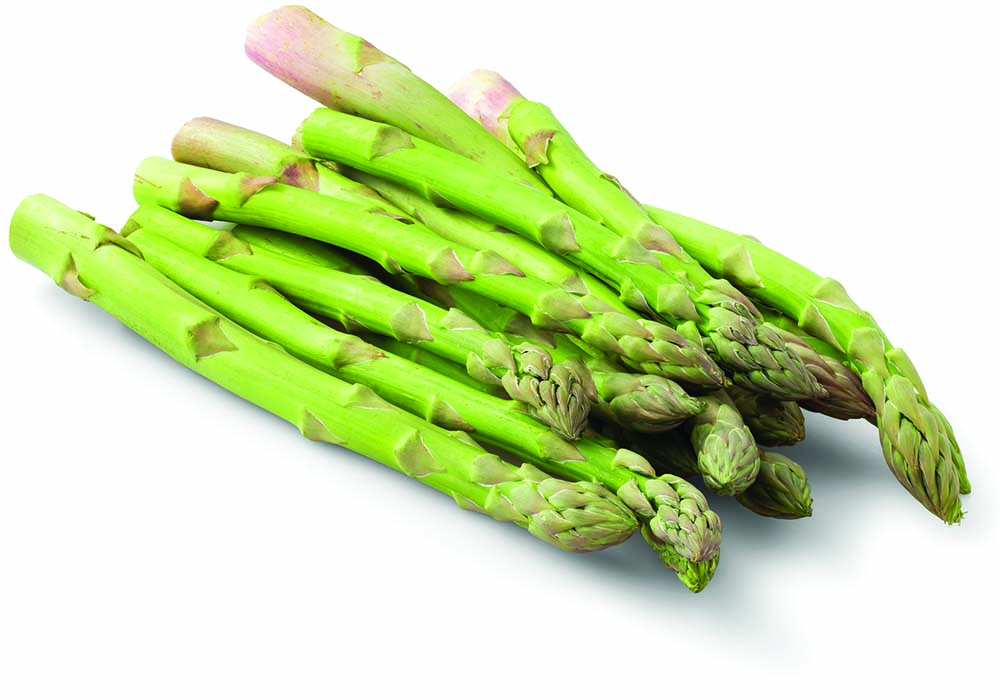 Need some gardening love this month? Start a new long-term relationship with an adored early-season garden delicacy, the asparagus!
Need some gardening love this month? Start a new long-term relationship with an adored early-season garden delicacy, the asparagus!
Asparagus (Asparagus officinalis) is a cool-season, perennial vegetable, native to Europe and Asia, that’s been an adored source of food and medicine for thousands of years. This fern-like plant produces tender shoots (spears) that emerge early each spring, making them one of the first vegetables of the year. And even better, asparagus is a long-lived plant that will produce those delicious, nutritious spears for years to come — 10 or more years if you treat them well.
As with most happy, healthy long-term romances, success with asparagus requires commitment and patience, especially in the early stages of the relationship. But it’s a plant well worth wooing, and now through March is the prime time to plant the seeds — or, more commonly, the crowns — of that relationship.
Let’s begin with the patience part, which is mostly needed as you await that first taste. Newly planted asparagus takes several years to become established, so even though spears typically emerge the first year, they shouldn’t be cut for two to three years after planting. One way to speed this up is to plant asparagus from one-, two-, or three-year-old crowns rather than seed. (The older crowns are usually more expensive but produce harvestable spears sooner.)
And as for commitment, that’s mostly about dedicating — and preparing — a happy home where this newfound love can take up residence in your garden. Once established, asparagus doesn’t transplant well, so it needs a permanent bed in a sunny (asparagus plants need 8-10 hours of sunlight a day), well-drained, weed-free spot. The area should also be large enough so you can space the plants (10-20 plants is usually enough for a family) at least a foot apart.
To plant crowns, prepare the bed lovingly by digging a trench at least a foot wide and about a foot deep. Amend the removed soil with compost and/or a balanced fertilizer, such as a 10-10-10 formulation. (Running a soil test can help determine your soil’s specific nutritional needs.) Make piles of the amended soil along the trench base and lay each crown, bud-top up, on the mounded soil, spreading the roots out evenly.
Some experts recommend gradually adding the amended soil back into the trench at intervals during the first growing season until the crowns are fully covered. Others say you can add it all at once. Whichever method you choose, make sure to water the crowns well after planting and continue applying an inch of water each week (more during hot, dry periods) for the first year. Mulching the bed after planting (straw is ideal for this) helps retain moisture near the roots and suppress weeds.
Though asparagus is a low-maintenance garden companion, it does need some attention. Keep the area well weeded, watch out for signs of pests and cut back the foliage in late fall (after it has all turned brown) before applying a protective winter mulch.
And as for finding your soul-mate asparagus, the pool of candidates includes many choices — ranging in spear color from green to pink and purple — suitable for home garden production. (Purple varieties usually produce more tender spears,
perfect for salads, but they do turn green when cooked. White asparagus, which you may see in produce departments, is not a variety but is produced by restricting sunlight as it emerges.)
 In addition to traditional and heirloom varieties, new improved options are also available, including all-male hybrids, which tend to live longer and produce larger spears. And, unlike female asparagus plants, male plants don’t produce seed, which can spread and create a bit of a weed problem in the garden.
In addition to traditional and heirloom varieties, new improved options are also available, including all-male hybrids, which tend to live longer and produce larger spears. And, unlike female asparagus plants, male plants don’t produce seed, which can spread and create a bit of a weed problem in the garden.
This is just the tip of the spear when it comes to learning about asparagus, but if you want to learn more before making a commitment, read up on asparagus production (lots of great information is available online) or ask a local expert for advice. If you’re willing to take the leap, I’m willing to bet you’ll find an asparagus to love.
Katie Jackson is a freelance writer and editor based in Opelika, Alabama. Contact her at katielamarjackson@gmail.com.





